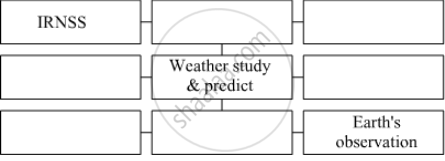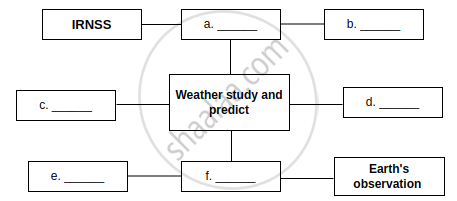Advertisements
Advertisements
Question
Mahendra and Virat are sitting at a distance of 1 metre from each other. Their masses are 75 kg and 80 kg respectively. What is the gravitational force between them? G = 6.67 x 10-11 Nm2/kg2
Solution
Given : r = 1 m, m1 = 75 kg, m2 = 80 kg
and G = 6.67 x 10 -11 Nm2/kg2
According to Newton’s law
`F = (Gm_1m_2)/(r^2)`
`F=(6.67 xx 10^(-11) xx 75 xx80)/1^2 n`
` = 4.002 xx 10^-7 N`
The gravitational force between Mahendra and Virat is 4.002 x 10-7 N
APPEARS IN
RELATED QUESTIONS
Why are geostationary satellites not useful for studies of polar regions?
Complete the following table.

Solve the problem.
How much time a satellite in an orbit at height 35780 km above earth's surface would take, if the mass of the earth would have been four times its original mass?
If the height of a satellite completing one revolution around the earth in T seconds is h1 meter, then what would be the height of a satellite taking \[2\sqrt{2} T\] seconds for one revolution?
Considering first correlation, complete the second.
Hubble telescope : At 569 km above the earth’s surface
Orbit of Hubble telescope : .............................
Write the proper name of the orbits of satellites shown in the following figure with their height from the earth’s surface.

The function of a satellite launcher is based on Newton's second law of motion.
Observe the figure and write the answers.

- Name the outer orbit.
- Which satellites revolve in low earth orbits?
- Which various orbits are given in the figure?
- Give an example of a launch vehicle based on Newton’s third law.
Write functions of Military satellite and Navigational satellite.
Define orbital velocity.
Numerical problem.
Calculate the speed with which a satellite moves if it is at a height of 36,000 km from the Earth’s surface and has an orbital period of 24 hr (Take R = 6370 km) [Hint: Convert hr into seconds before doing calculation]
What is microgravity?
The orbital velocity of the satellite depends on its ______.
Give scientific reasons.
The geostationary satellite is not useful in the study of polar regions.
Complete the following equations:

The orbit of a satellite is exactly 35780 km above the earth's surface and its tangential velocity is 3.08 km/s.
How much time the satellite will take to complete one revolution around the earth?
(Radius of earth = 6400 km.)
